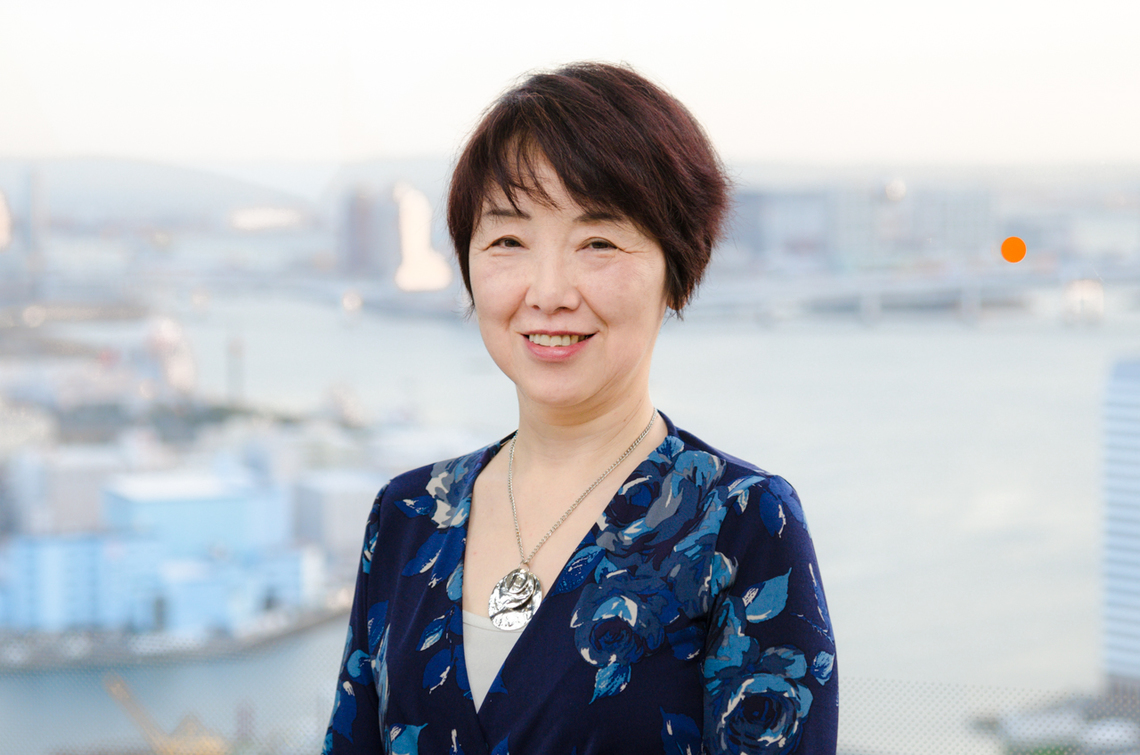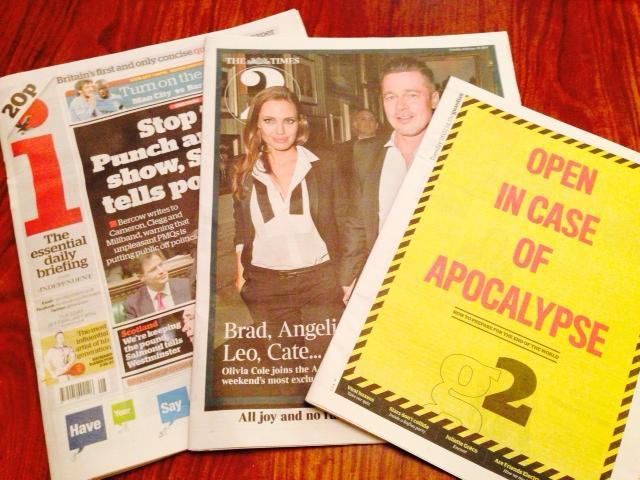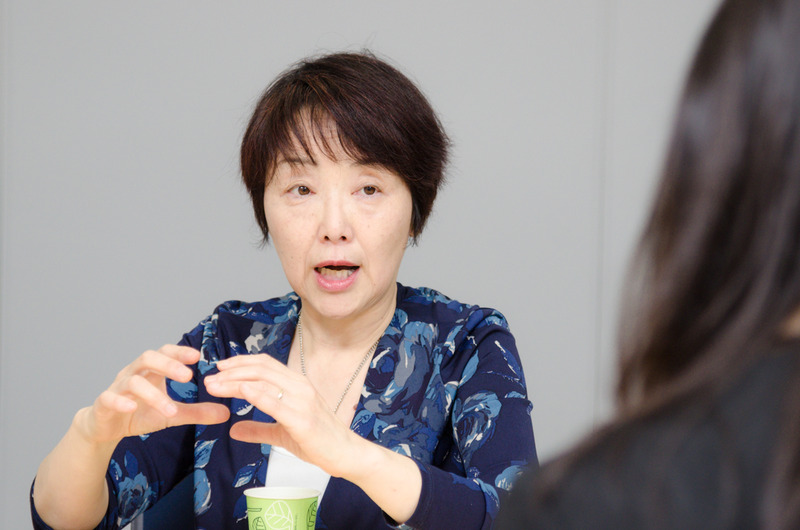Part 1: Considering the Future of Newspaper Media – Learning from Examples Across Europe
In an era where news is freely accessible online anytime, anywhere, Japan's newspaper industry faces a turning point regarding its raison d'être as a news medium and the very business model it relies on. European and American newspapers have been quick to make their website content freely available, and there is now a thriving movement toward open journalism, where articles are generated collaboratively with readers. We spoke with Kyoko Kobayashi, a UK-based media analyst well-versed in global media trends, about newspaper strategies in Europe and the future of open journalism to consider the future of newspaper media.

Open Journalism in Europe
――The Guardian's "Three Little Pigs" commercial, which announced its open journalism declaration, won a Gold Lion in the Film Craft category at Cannes Lions 2012. Could you tell us about the open journalism movement among European newspapers, starting with The Guardian?
Kobayashi: That commercial aired when The Guardian prominently featured open journalism as part of its brand strategy. A key background factor is that when newspapers began launching websites in the mid-1990s, the UK version was freely accessible online. At the time, it was positioned purely as a supplement to the print edition.
With the BBC also establishing a free news site, newspapers needed to compete. Additionally, driven by the belief that "broadly disseminating information enriches society and the nation," newspapers consistently provided web articles for free from early on. They also pioneered efforts to incorporate public and reader opinions by including comment sections.
A prominent example of "open journalism" is The Guardian, which first created the blog site "Comment is Free" within its own website for citizens, NGOs, and journalists. This meant not just soliciting opinions in the comment sections of regular articles, but providing them with dedicated space on the site to voice their views. Furthermore, they opened their API (Application Programming Interface) to allow NGOs, tourism bureaus, and others to freely utilize article data, enabling analysis and secondary use of past articles, effectively making their content open like a public good.

――The fact that citizens and NGOs can use applications to create articles themselves truly means it's been opened up as data. Will there be advertising on Guardian articles used by citizens?
Kobayashi: If ads are acceptable, they can be used for free. If they want to use it without ads, there's a fee. It's not entirely free; they seem to operate on a tiered system. The Independent in the UK, for example, has allowed all articles on its website to be read for free. They previously experimented with a model where printing articles normally displayed ads, but users could pay to get ad-free versions. The Financial Times, which has a successful paid digital edition, also uses a metered system where some content is free. It feels like each newspaper is trying various approaches to combine free and paid content to generate profits.
The "Youth Initiatives" Each Company is Rolling Out
――As web-centric open journalism advances, how are print newspapers positioned in Europe?
Kobayashi: The greatest value of print media lies in the trustworthiness and high quality that comes from having an editorial department, investing a certain number of people and resources, and having professional journalists create the content. I believe this is still strongly recognized today. Even when articles are read online, this aspect is kept in mind.
――In Japan, there's talk of young people turning away from newspapers. How is this in Europe? What kind of communication are newspapers undertaking to reach young people?
Kobayashi: The trend of young people turning away from newspapers is the same in Europe. Regardless of age, readers and advertisers tend to gravitate toward online over print media. However, for example, The Guardian collaborates with The Observer, its Sunday edition, to compile articles on topics likely to interest young people and interviews with young celebrities into A4-sized booklets distributed on street corners. They create content accessible even to young people who've never held a physical newspaper, with advertising targeted at the younger demographic. To convert this into subscriptions, they include coupons offering a two-week discount on the paper, encouraging people to actually go to retailers or supermarkets to buy it. They've even created mini-wallets to hold these coupons. Inside the wallet, you'll find ads like subway maps and movie listings. I myself have used these coupons to buy newspapers (laughs), and after two weeks, it becomes an experience of subscribing.
――Beyond these sales promotions, does the content of the paper itself include material geared toward younger readers?
Kobayashi: Yes. For example, The Independent created a simplified newspaper called "i" for young commuters in 2010. They priced it at one-fifth the cost of the full paper, and it sold four to five times more copies than the full paper. Furthermore, newspapers like The Guardian and The Times include a daily supplement booklet that collects lighter information, similar to what you'd find in Japan's evening papers. It's like a 15-page magazine focused on content likely to interest people in their 20s to 40s, covering topics like dieting, travel, movies, and books.

In Germany and Austria, where home delivery rates are high,
――I hear that Germany and Austria, like Japan, have high newspaper subscription rates and are read by relatively younger demographics.
 Kobayashi: Yes. Like Japan, home delivery rates are high, and subscriptions are commonplace in these regions. The German Newspaper Association takes newspapers to kindergartens for use in classes, and when women in their 20s and 30s give birth, they cooperate with maternity hospitals to give sets of books and newspapers as gifts through doctors. Two media companies I previously covered, Axel Springer in Germany and Rasemedia in Austria, are also doing a good job of reaching the younger generation. Axel Springer, in particular, is very proactive in its youth initiatives. It publishes a newspaper called "Woerth Compact," which is a re-edited version of the high-end newspaper Woerth aimed at young people. It also has an in-house training system for young people and supports technology start-ups.
Kobayashi: Yes. Like Japan, home delivery rates are high, and subscriptions are commonplace in these regions. The German Newspaper Association takes newspapers to kindergartens for use in classes, and when women in their 20s and 30s give birth, they cooperate with maternity hospitals to give sets of books and newspapers as gifts through doctors. Two media companies I previously covered, Axel Springer in Germany and Rasemedia in Austria, are also doing a good job of reaching the younger generation. Axel Springer, in particular, is very proactive in its youth initiatives. It publishes a newspaper called "Woerth Compact," which is a re-edited version of the high-end newspaper Woerth aimed at young people. It also has an in-house training system for young people and supports technology start-ups.
Lösemedien also has a newspaper aimed at young people, which features many local young people in its pages. When they go to events where young people gather, take pictures of them, and publish them, the articles tend to be shared on Facebook.
So, you have direct contact with the demographic you want to read your newspaper, you talk to them directly, and you create pages that reflect their opinions.
Kobayashi: Yes. Another key point is that the editorial leadership is young. In fact, the editor-in-chief of The Independent is still in his early 30s. While not everyone working at the newspaper is necessarily young, it's fair to say those in their 30s and 40s form the core. If Japan wants to win back readers who don't read newspapers, one possible approach could be significantly rejuvenating the organization.
――It seems there's still potential for various initiatives in Japan too. Finally, do you think Japanese newspaper media will also rapidly pivot toward a major digital shift going forward?
Kobayashi: Actually, I don't think the situations surrounding Japanese and European newspaper media can be simply equated. Why? Because in Japan, is the public really demanding bold transformations for newspapers, like the Washington Post being bought by an individual from a completely different industry? I suspect the public would rather choose the status quo and stability. Especially in Japan, the expectations for newspapers as a public institution are very high. In Europe, newspaper websites often have comment sections, and both publishers and readers are accustomed to diverse opinions being expressed. In contrast, Japanese newspaper sites rarely have comment sections. It's somewhat regrettable that communication becomes one-way precisely because newspapers are, in a sense, public institutions.
(Continued)







 Kobayashi: Yes
Kobayashi: Yes